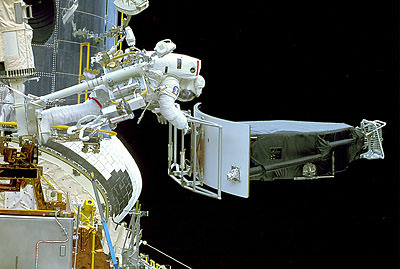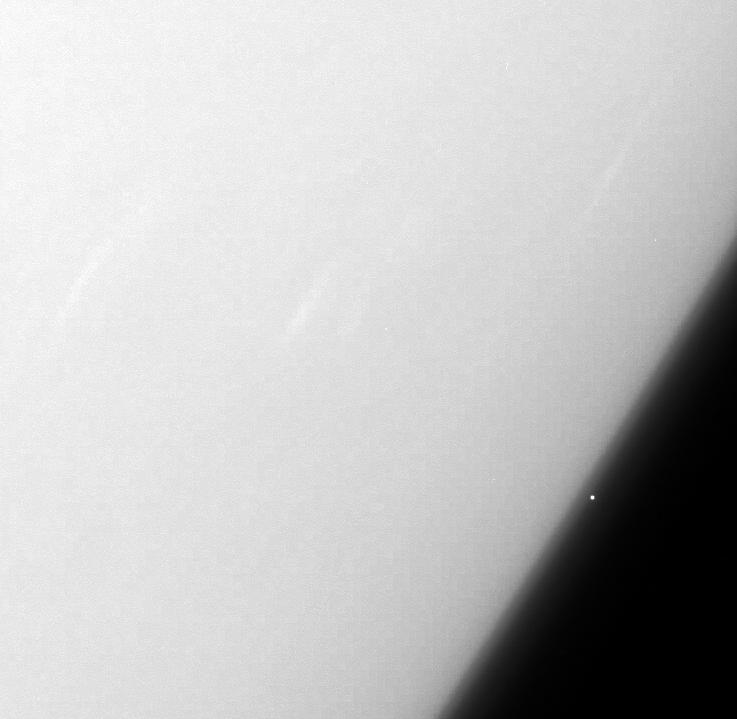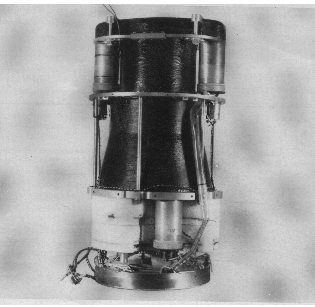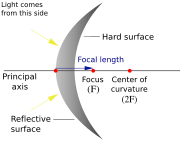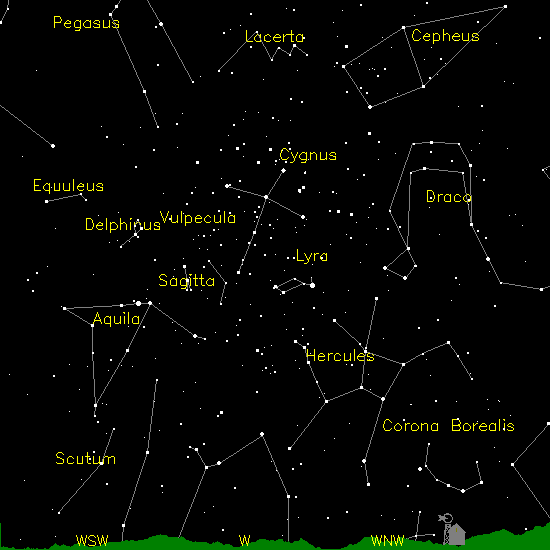Hello, Cosmic Kids! As the seasons change, not only do the Earthly birds migrate, but so do the celestial ones. In the Northern Hemisphere, it’s not unusual to see large flocks of our feathered friends moving on to warmer climes, but did you know that there are bird constellations that are migrating, too? Instead of flying south for the Winter, these ancient avians are headed west…
 Over the next few days just after sunset, the slender crescent Moon will glide silently between two constellations that represent birds and help you to locate them with ease. While you’re out, listen to the voices on the wind… “Look to the southwest for Aquila the Eagle. Perhaps you recognize it as is one of the three constellations from which we learned the stars of the Summer Triangle? Aquila was known to the Romans as Vultur volans the ‘Flying Vulture’. Now instead of flying high in the sky, it is headed west. Look for a straight line of three stars almost level with the horizon. The center and brightest of these three stars is Altair and they represent the Eagle’s wings. The head of the Eagle – Lambda – is a much dimmer star which stretches off to the southwest to stars from Altair. Its proper name is Al Thalimain, which means the two ostriches! But there’s still more… If you look again at Altair, whose Arabic name means ‘the bird’, you’ll see another fairly bright star to the south. That’s Beta, or better known as Alshain. In Arabic, it means falcon!”
Over the next few days just after sunset, the slender crescent Moon will glide silently between two constellations that represent birds and help you to locate them with ease. While you’re out, listen to the voices on the wind… “Look to the southwest for Aquila the Eagle. Perhaps you recognize it as is one of the three constellations from which we learned the stars of the Summer Triangle? Aquila was known to the Romans as Vultur volans the ‘Flying Vulture’. Now instead of flying high in the sky, it is headed west. Look for a straight line of three stars almost level with the horizon. The center and brightest of these three stars is Altair and they represent the Eagle’s wings. The head of the Eagle – Lambda – is a much dimmer star which stretches off to the southwest to stars from Altair. Its proper name is Al Thalimain, which means the two ostriches! But there’s still more… If you look again at Altair, whose Arabic name means ‘the bird’, you’ll see another fairly bright star to the south. That’s Beta, or better known as Alshain. In Arabic, it means falcon!”
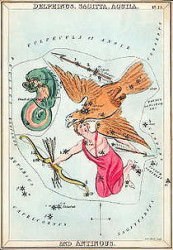 “To the ancient Greeks, Aquila was thought of as the feathered servant of Zeus. It was the Eagle who was in charge of holding the god’s thunderbolts and doing his chores. Aquila was also considered by some cultures to be the great eagle who ate Prometheus’ liver for giving fire to humans! To the Indians, the line of three stars which includes Altair is thought to be the footprints of the god Vishnu. Some Asian traditions see the bright star Vega as the Weaving-Princess who married Altair, the shepherd. In the Chinese love story of Qi Xi, Niu Lang (Altair) and his two children (Beta and Gamma Aquilae) are separated forever from their wife and mother Zhi Nu (Vega) who is on the far side of the river, the Milky Way.”
“To the ancient Greeks, Aquila was thought of as the feathered servant of Zeus. It was the Eagle who was in charge of holding the god’s thunderbolts and doing his chores. Aquila was also considered by some cultures to be the great eagle who ate Prometheus’ liver for giving fire to humans! To the Indians, the line of three stars which includes Altair is thought to be the footprints of the god Vishnu. Some Asian traditions see the bright star Vega as the Weaving-Princess who married Altair, the shepherd. In the Chinese love story of Qi Xi, Niu Lang (Altair) and his two children (Beta and Gamma Aquilae) are separated forever from their wife and mother Zhi Nu (Vega) who is on the far side of the river, the Milky Way.”
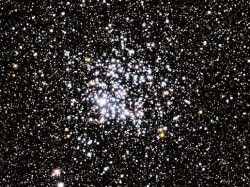 “If your skies are dark early enough and you have an open western horizon, you can use your binoculars to look for a flight of ‘Wild Ducks’ headed west, too. You will find it just a little north and west of the head of the Eagle, Lambda. This compact, open star cluster is also known as Messier Object 11 or NGC 6705. While you may only see a few stars in this 220 million years old gathering of suns, the cluster proper contains almost 2900 stars. Full of yellow and red giant stars these ‘ducks’ aren’t just migrating, they’re speeding away from us at 22 kilometers per second!”
“If your skies are dark early enough and you have an open western horizon, you can use your binoculars to look for a flight of ‘Wild Ducks’ headed west, too. You will find it just a little north and west of the head of the Eagle, Lambda. This compact, open star cluster is also known as Messier Object 11 or NGC 6705. While you may only see a few stars in this 220 million years old gathering of suns, the cluster proper contains almost 2900 stars. Full of yellow and red giant stars these ‘ducks’ aren’t just migrating, they’re speeding away from us at 22 kilometers per second!”
 Now, let’s go a bit higher and take a look at big bird – Cygnus the Swan. Sometimes folks refer to this constellation as the Northern Cross because of its shape. Do you recognize it as also being a member of the Summer Triangle? The tail of the Swan is bright star Deneb, Arabic for ‘tail’. Deneb is a very young, bright blue supergiant star and you’ll see three stars in a row below it – Gamma in the center, Delta to the north and Epsilon to the south. Two stars west of Gamma is Beta – Albireo – the beak of the Swan. If you have a telescope or higher power binoculars, take a look! Albireo is really two stars. This is what is known as a binary star, and you’ll find the pair has a very noticeable orange and blue color contrast.”
Now, let’s go a bit higher and take a look at big bird – Cygnus the Swan. Sometimes folks refer to this constellation as the Northern Cross because of its shape. Do you recognize it as also being a member of the Summer Triangle? The tail of the Swan is bright star Deneb, Arabic for ‘tail’. Deneb is a very young, bright blue supergiant star and you’ll see three stars in a row below it – Gamma in the center, Delta to the north and Epsilon to the south. Two stars west of Gamma is Beta – Albireo – the beak of the Swan. If you have a telescope or higher power binoculars, take a look! Albireo is really two stars. This is what is known as a binary star, and you’ll find the pair has a very noticeable orange and blue color contrast.”
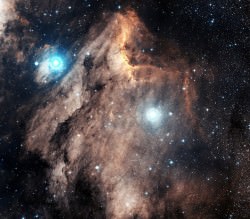 “Is that all the birds in Cygnus? Not hardly. Although it is very hard to see optically, there is another feathered friend very close to Deneb… the Pelican Nebula! This neon night bird is filled with stars being born and clouds of gas evolving. The young stars inside the cloud are very active and their energy is turning the cold gas into hot gas, causing it to glow and spread outward. The ridge of cold gas being pushed away from the 2,000 light-year year distant warm gas cloud is called an ionization front. Dark dust clouds are what shapes Pelican’s eye and long bill, while the ionization front make up the curved shape of the head and neck.”
“Is that all the birds in Cygnus? Not hardly. Although it is very hard to see optically, there is another feathered friend very close to Deneb… the Pelican Nebula! This neon night bird is filled with stars being born and clouds of gas evolving. The young stars inside the cloud are very active and their energy is turning the cold gas into hot gas, causing it to glow and spread outward. The ridge of cold gas being pushed away from the 2,000 light-year year distant warm gas cloud is called an ionization front. Dark dust clouds are what shapes Pelican’s eye and long bill, while the ionization front make up the curved shape of the head and neck.”
 “So where did the Swan come from? There are many legends. To the ancient Greeks, Cygnus is Zeus in disguise, flying his way across the sky to win the heart of Leda, the mother of Helen of Troy and the Gemini twins. Perhaps Cygnus is Orpheus, who was placed in the sky along with his harp (Lyra) after he was murdered. In one myth, Cygnus is a friend of Phaethon, the son of Sun god Apollo, who crashed the sky chariot while driving along the Milky Way. It is said that Zeus turned Cygnus into a swan for his heroic attempts to save Phaethon from the starry river. Perhaps Cygnus is the son of Neptune – saved by his father who turned him into a swan before he was defeated by Achilles. But according to Chinese mythology, Cygnus is the magpie bridge. And you know what magpies are, don’t you? That’s right… Birds!”
“So where did the Swan come from? There are many legends. To the ancient Greeks, Cygnus is Zeus in disguise, flying his way across the sky to win the heart of Leda, the mother of Helen of Troy and the Gemini twins. Perhaps Cygnus is Orpheus, who was placed in the sky along with his harp (Lyra) after he was murdered. In one myth, Cygnus is a friend of Phaethon, the son of Sun god Apollo, who crashed the sky chariot while driving along the Milky Way. It is said that Zeus turned Cygnus into a swan for his heroic attempts to save Phaethon from the starry river. Perhaps Cygnus is the son of Neptune – saved by his father who turned him into a swan before he was defeated by Achilles. But according to Chinese mythology, Cygnus is the magpie bridge. And you know what magpies are, don’t you? That’s right… Birds!”
If you don’t find the Aquila constellation and Cygnus tonight, keep trying. Over the next few days you’ll find the crescent Moon will help guide the way! And keep looking up…
Many thanks to these image resources: Mythical Figures (Credit: Uranometria Archives), Constellation Maps (Credit: Windows to the Universe, UCAR), Aquila and Cygnus Illustrations (Credit: SEDS and Stellarium), Wild Duck Cluster (Credit: NASA image gallery) and Pelican Nebula (Credit: Digitized Sky Survey/Charles Shahar).

